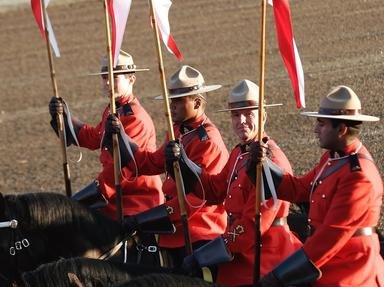Quiz Answer Key and Fun Facts
1. It is theorized that the first people to come to what would one day be called Canada arrived on foot by means of a land bridge. What geographical feature can be found today where that land bridge was?
2. The first visitors from Europe were a group of Norsemen led by Leif Ericson, who arrived in A.D. 1001. On the island of Newfoundland, a Viking settlement was discovered in 1963, lending authentication to the Norse sagas. What is the present-day name of this National Historic Site?
3. A short five years after Christopher Columbus' first voyage of discovery, this Anglo-Italian explorer laid the first claim to Canadian soil for England in 1497. Who was he?
4. Known as the 'Father of New France', Samuel de Champlain (amongst other things) created many accurate maps of the eastern Canadian region. He also sailed up the St. Lawrence River and established a settlement on July 3rd, 1608. What city did he found?
5. Exploration of Canada's interior made leaps and bounds with the establishment of the Hudson's Bay Company in 1670. The fur trade became the prime economy of this new world, built largely on which animal, depicted today on Canada's 5-cent piece.
6. The Seven Years' War was fought over five continents and was tied to the colonial interests of the Kingdoms of Great Britain and France. In Canada, this was culminated in a battle between Major General James Wolfe and Louis-Joseph de Montcalm-Gozon, Marquis de Saint-Veran.
Where was this decisive British victory fought?
7. From 1775 to 1783, the 13 Colonies had a Revolutionary War against the British, establishing themselves as an independent nation. A few years after THAT, the USA took advantage of the Napoleonic Wars in Europe to address some grievances that they had with the British, to put it mildly. They looked north to British North America (aka Canada). The War of 1812 ensued.
What treaty ended the War of 1812, reverting all borders to their pre-war positions?
8. The 1840 Act of Union joined together Upper Canada (English) and Lower Canada (French) to become the Province of Canada. In September of 1864 the maritime colonies met in Charlottetown (PEI) to discuss a potential Maritime Union. Representatives from the Province of Canada crashed their party and proposed a different Confederation.
Thus was born the Dominion of Canada. After three conferences, the British North America Act came into effect on July 1st, 1867. Which of these provinces was NOT one of the four to join Confederation on that date?
9. Six more provinces eventually joined the Dominion of Canada following Confederation in 1867. Which was the last to do so, on March 31st, 1949?
10. Canada remained part of the British Commonwealth following Confederation, and would not repatriate the Constitution until 1982 with the Constitution Act, finally becoming a truly independent nation.
My question for you is: when did the government of Canada adopt the Maple Leaf as our national flag?
Source: Author
reedy
This quiz was reviewed by FunTrivia editor
bloomsby before going online.
Any errors found in FunTrivia content are routinely corrected through our feedback system.

